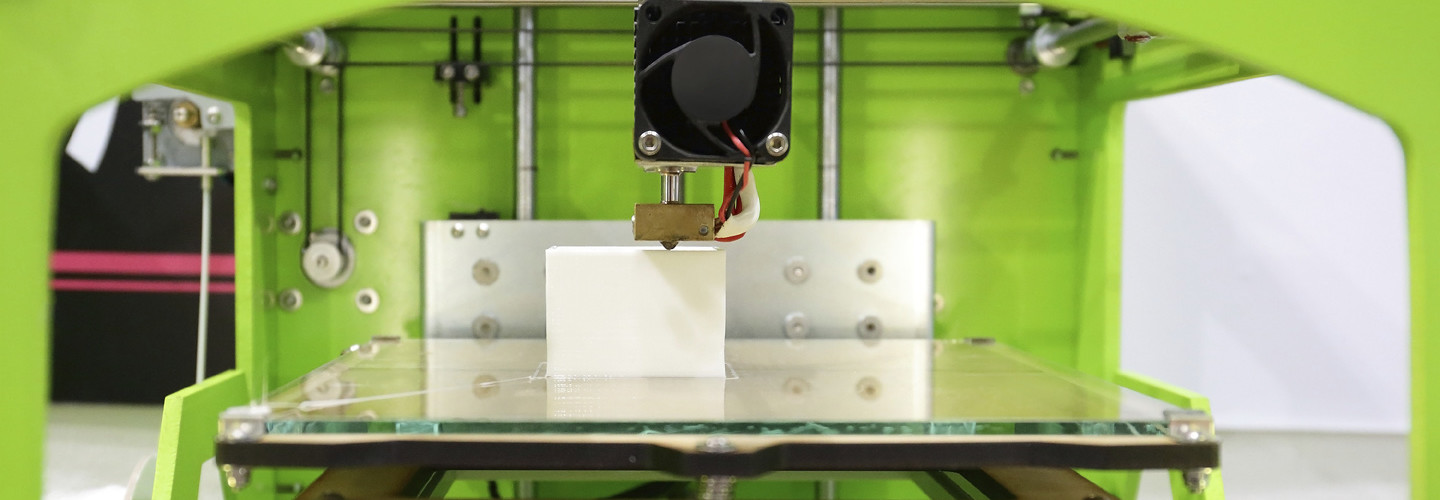Teaching Old Dogs New Tricks: 3D Printing Within Higher Ed
As if job hunting weren’t difficult enough, the mainstream acceptance of 3D printing technology has added a new dimension to the search. Given that meaningful innovation opportunities (across a broad spectrum of fields) are seemingly endless with 3D technology, job seekers who possess subject matter expertise in this area will most likely see endless employment opportunities. 3D instruction and 3D skills are a competitive edge for universities and for their graduates.
A Wanted Analytics audit of online job postings from early 2015 found that hiring companies have become increasingly likely to name 3D printing and additive manufacturing among candidate skill requirements.
According to the report, the sectors that most often list the requirement include manufacturing; professional, scientific and technical services; and educational services. Engineering, healthcare and software organizations also seek candidates with 3D printing skills.
The new prerequisite may seem like quite the hurdle, but luckily for students about to enter the workforce, colleges and universities are poised to respond to the growing need for training on 3D modeling tools.
Utah Valley University, for instance, opened its new 3D prototyping lab in early October to give a leg up to aspiring engineers.
“Currently only 17 percent of application engineer positions are filled nationwide,” a UVU press release states. “This utilization of this lab will lead to 100 percent employment for students completing the program.”
Equally exciting, Florida International University opened its CARTA Innovation Lab at the College of Architecture + The Arts Miami Beach Urban Studios. There, architecture students will use the printers to reimagine buildings, while art students will leverage the technology to design musical instruments and other 3D models.
And, the University of South Florida is working with outside educators to host a 3D printing workshop that uses replica skulls to help forensic anthropology students sculpt facial reconstructions of unidentified cold-case victims.
Budgeting Dollars and Sense
For colleges and universities that hope to offer similar technology resources, cost is a top consideration. Onvia, a company that maintains a database of federal, state and local contracting data, found that the average 3D printing contract for higher ed was valued at more than $32,000 in 2013.
While that may seem like a hefty price tag, the cost of 3D printers has dropped over the years, and institutions have found creative ways to bankroll the technology. Some universities encourage interested departments to pool financial resources to create a shared innovation lab. Other institutions look to university gift funds, grants and community partnerships to help back 3D printing initiatives.
Beyond making room in the budget, higher ed institutions need to decide which equipment best suits their needs. Solutions on the market include filament-, resin- and powder-based printers. But because each version requires different materials and features a unique output resolution and size range, it can be difficult to make a purchasing decision.
Institutions such as Union College in Schenectady, N.Y., and the State University of New York at New Paltz simplified the selection process by purchasing the MakerBot Starter Lab, which bundles hardware, software, materials and training resources. The Starter Lab lets institutions hit the ground running so they can focus on the most important aspects of any 3D printing initiative: curriculum and instruction.
Because 3D printing technology is relatively new and still evolving, few formalized training programs exist. Institutions have the freedom to design their own comprehensive course offerings, prioritizing agility so as to respond to changing technologies, techniques and applications.
While all of that may be seen as a challenge, it’s also an opportunity. Colleges and universities that master 3D training early can not only solidify their positions as leading educators in the space but also attract top talent — students who hope to expand their job prospects and become the next generation of tech-savvy professionals.
This article is part of EdTech: Focus on Higher Education’s UniversITy blog series.









